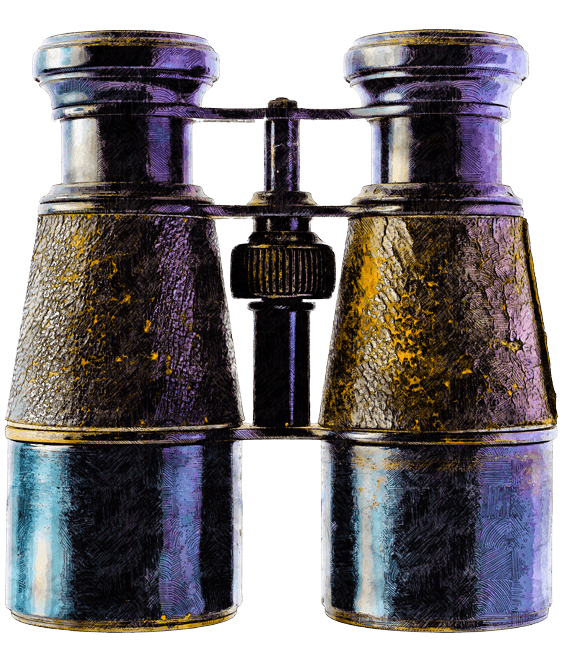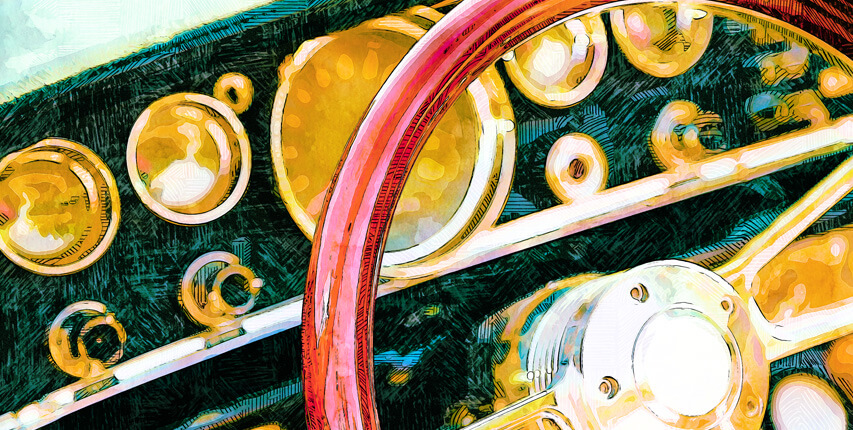From sunrise to starlight, here’s what makes summer skies so magical.
Summer isn’t just for sunshine and sandals — it’s also full of fascinating natural events, from the longest day of the year to nighttime light shows in the sky. Whether you’re watching fireflies blink in the backyard or stargazing on a warm night, there’s a lot going on above us. These 11 fun facts dive into the science, history, and wonder of summer skies — from ancient sun-watching sites to glowing meteors and constellations overhead.
1.
The Summer Solstice is the Longest Day of the Year
Occurring around June 20–21 in the Northern Hemisphere, it’s when the Earth’s tilt is most inclined toward the sun.
On the solstice, the North Pole is tilted about 23.5° toward the sun, giving the Northern Hemisphere its longest stretch of daylight.
The summer solstice marks the astronomical start of summer, though meteorological summer begins on June 1.
Even though it’s the longest day, it’s not always the hottest—because Earth’s land and oceans take time to warm up (a lag known as seasonal delay).
Many ancient cultures celebrated the solstice with festivals, bonfires, and rituals tied to abundance, fertility, and the power of the sun.
2.
Some Places Get 24 Hours of Daylight
In parts of Alaska, Norway, and northern Canada, the sun doesn’t set at all during the solstice — this is called the Midnight Sun.
The Midnight Sun occurs in regions above the Arctic Circle, where the Earth’s tilt keeps the sun visible even at midnight.
Barrow, Alaska (now known as Utqiaġvik), experiences over two months of continuous daylight in summer.
In places like Norway, the phenomenon is celebrated with late-night hikes, bonfires, and festivals—because who wants to sleep when the sky never dims?
3.
Solstice Means “Sun Stands Still”
The word comes from Latin solstitium, referring to the point when the sun appears to pause in the sky before reversing direction.
The word solstitium combines sol (sun) and sistere (to stand still), describing the sun’s apparent pause at its highest (or lowest) point in the sky.
For several days before and after the solstice, the sun’s path shifts so little that it seems to hover in place at sunrise and sunset.
Ancient cultures noticed this “pause” and built monuments like Stonehenge to mark the moment when the sun appeared to turn around.
4.
Ancient Structures Align with the Solstice
Stonehenge in England and Chichen Itzá in Mexico were built to track the sun’s position during solstices.
At Stonehenge, the rising sun on the summer solstice aligns perfectly with the Heel Stone and shines into the heart of the monument.
At Chichén Itzá, the pyramid of El Castillo casts a serpent-shaped shadow during equinoxes and marks solar events through its corners and stairs.
These alignments weren’t just decorative—they helped track seasons, guide planting, and hold ceremonial meaning tied to the sun’s power.
5.
You Can Spot the Summer Triangle
Three bright stars — Vega, Deneb, and Altair — form a prominent triangle overhead during summer nights.
The Summer Triangle connects stars from three different constellations: Vega (Lyra), Deneb (Cygnus), and Altair (Aquila).
These stars are among the brightest in the night sky and are visible even in areas with some light pollution.
Ancient skywatchers used the triangle as a seasonal marker—its rise in the east at dusk signaled the arrival of warmer nights and stargazing season.
6.
Scorpius and Sagittarius Rule the Southern Sky
These constellations are easiest to see in summer and are located near the center of our Milky Way.
Scorpius, with its curved tail and red heart star Antares, is one of the most recognizable summer constellations.
Sagittarius resembles a teapot—and if you look closely, the “steam” rising from its spout points toward the center of our galaxy.
This part of the sky is densely packed with stars, nebulae, and cosmic dust, making it a favorite for astrophotographers and stargazers alike.
7.
The Sun Is Actually Closest to Earth in Winter
Earth’s orbit brings it closest to the sun in January (perihelion) and farthest in July (aphelion). The tilt, not the distance, causes seasons.
Perihelion usually occurs around January 3rd, when Earth is about 91.4 million miles from the sun.
In contrast, aphelion in early July stretches the distance to about 94.5 million miles.
Seasonal temperatures come from the Earth’s axial tilt (about 23.5°), which changes how much sunlight each hemisphere receives—not how near or far we are. That’s why it can be snowing while we’re technically closest to the sun!
8.
Mars and Venus Are Often Visible
Summer is a great time to spot planets — Mars has a reddish glow and Venus is often seen near sunset or sunrise.
Venus is called the “Evening Star” or “Morning Star” depending on when it appears—it’s the third-brightest object in the sky after the Sun and Moon.
Mars has a soft reddish tint due to iron oxide (rust) on its surface, and its visibility varies with its orbit—sometimes it glows brightly, sometimes it’s faint.
Spotting these planets doesn’t require a telescope—just clear skies and good timing, especially during twilight hours.
9.
The Perseids Peak Every August
The Perseid meteor shower is one of the brightest and most reliable, peaking around August 11–13 with up to 100 meteors per hour.
The Perseids are caused by Earth passing through debris left by Comet Swift-Tuttle—tiny particles burn up in our atmosphere, creating bright streaks.
They’re best viewed after midnight in dark, clear skies, away from city lights.
The meteors appear to radiate from the constellation Perseus, but they can streak across any part of the sky.
For the best show, lie back and look up—you don’t need binoculars or a telescope, just a little patience and maybe a blanket.
10.
Noctilucent Clouds Glow at Night
These rare clouds are seen after sunset during summer — high in the atmosphere and lit by sunlight from below the horizon.
They appear in summer because the upper atmosphere is colder, allowing ice to form even when it’s warm at ground level.
Best seen at twilight, they often shimmer with silvery-blue light, glowing after the sun has set.
Scientists believe they may be linked to climate patterns and space dust, making them not just beautiful but scientifically intriguing.
11.
Fireflies Flash to Communicate
These glowing insects peak in early summer and use bioluminescent flashes to attract mates.
Fireflies (or lightning bugs) produce light through a process called bioluminescence, using a chemical reaction in their lower abdomen.
Each species has its own flash pattern—a sort of Morse code to help them find the right mate.
Some firefly species even synchronize their flashing in groups, lighting up trees and fields like twinkling fairy lights.
Their light is incredibly efficient, generating almost no heat, unlike a regular bulb.
Fun fact: Some cultures believed fireflies were tiny spirits or stars come to visit the earth on warm summer nights.
Bonus Solstice & Celestial Trivia
When Lightning Bugs Lit the Lab
Firefly light inspired scientists to study bioluminescence — and even helped in medical research!
The enzyme luciferase, which fireflies use to glow, has been used in biomedical labs to detect cell activity, track gene expression, and even help screen for cancer.
Firefly genes have been inserted into plants, animals, and bacteria in research — making them glow to study biological functions in real time.
Nature’s little lanterns continue to influence science in big ways.
Why Fireflies Are Disappearing
Firefly populations are declining in some areas due to habitat loss, light pollution, and pesticides.
Fireflies thrive in moist, grassy areas — especially near forests or water — and many species live in the same spot for their whole lives.
Artificial lighting at night can confuse their signals and disrupt mating.
Want to help? Create a firefly-friendly yard: turn off outdoor lights at night, avoid lawn chemicals, and leave some leaf litter for larvae to grow.
Moonlight Has Its Own Moments
While the sun takes center stage during the solstice, the moon offers quiet drama — from supermoons to seasonal names like the Strawberry Moon.
June’s full moon is often called the Strawberry Moon, marking berry harvests in Native American and European traditions.
Sometimes, the solstice and a full moon nearly align — a rare pairing that bathes the shortest night in silvery glow.
Supermoons, when the moon is closest to Earth, can appear extra large during summer skies.
The Milky Way Shows Off in Summer
In the summer, we’re gazing toward the center of our galaxy — making the Milky Way appear especially bright and rich in detail.
The galactic core lies in the direction of the constellations Sagittarius and Scorpius — visible in dark skies away from city lights.
Long-exposure photos during summer reveal dusty star clouds and glowing nebulae stretching across the sky.
Stargazers in summer often plan trips to dark-sky parks to get the best view of this cosmic river.
Ancient Skies, Living Calendars
Cultures around the world tracked time by the sun and stars — and some still do.
The Inuit, Māori, and Australian Aboriginal peoples used celestial events to time migration, harvests, and ceremonies.
n Hawaii, the rising of the star cluster Pleiades (Makaliʻi) marked the start of Makahiki — a season of peace and harvest.
Many ancient calendars were lunar-solar hybrids, blending star wisdom with Earth rhythms.
Guided by the Glow
Before maps and GPS, travelers navigated by the stars—using constellations and celestial patterns to find their way across land and sea.
The North Star (Polaris) helped sailors in the Northern Hemisphere determine direction—it stays nearly fixed in the sky, pointing north.
Caravans and explorers looked to the rising and setting of stars as dependable guides long before compasses became common.
Vocabulary
*Luciferase – an enzyme that produces light in a chemical reaction known as bioluminescence. It reacts with a molecule called luciferin, oxygen, and sometimes other cofactors to emit a visible glow.
Found in organisms like fireflies, certain jellyfish, and deep-sea creatures.
Different types of luciferase produce different colors of light, depending on the species.
Scientists use luciferase in research as a “reporter” to study gene expression and track biological processes.
In short: luciferase is nature’s glow switch.
*Bioluminescence – is light made by living things—a natural glow created through a chemical reaction inside an organism’s body.
It happens when luciferin (a light-producing molecule) reacts with oxygen, often helped by the enzyme luciferase.
Found in fireflies, glow worms, jellyfish, deep-sea fish, some fungi, and even plankton.
Animals use it for all sorts of reasons—attracting mates, luring prey, camouflage, or sending signals.
In short: bioluminescence is life lighting up from within.
*Seasonal Delay – A time lag between the solstice and the hottest or coldest days, caused by the Earth’s land and oceans slowly absorbing and releasing heat.
*Solstice – The point when the sun reaches its highest or lowest position in the sky at noon, resulting in the longest or shortest day of the year.
*Midnight Sun – A natural phenomenon in polar regions where the sun stays visible at midnight during summer months.
*Perihelion – The point in Earth’s orbit when it is closest to the sun (early January).
*Aphelion – The point in Earth’s orbit when it is farthest from the sun (early July).
*Constellation – A recognizable pattern of stars in the sky, often named after mythological figures, animals, or objects.
*Nebulae – Massive clouds of gas and dust in space, often where new stars are born.
*Galactic Core – The dense, star-filled center of a galaxy—in our case, the Milky Way.
*Light Pollution – Artificial lighting that brightens the night sky, making stars and other celestial objects harder to see.
*Summer Triangle – A prominent asterism (star pattern) formed by three bright stars: Vega, Deneb, and Altair.
*Polaris (North Star) – A star located nearly above Earth’s North Pole, used historically for navigation.
*Supermoon – A full moon that appears larger and brighter because it is closer to Earth in its orbit.
*Pleiades (Makaliʻi) – A star cluster visible in the night sky; important in various cultural calendars and traditions.
*Noctilucent Clouds – Rare, high-altitude clouds that glow after sunset, made of ice crystals near the edge of space.
*El Castillo – A pyramid at Chichén Itzá, Mexico, designed to track solar and celestial events.
*Heel Stone – A specific stone at Stonehenge aligned with the sunrise on the summer solstice.
*Makahiki – A traditional Hawaiian season of harvest and rest, marked by the appearance of the Pleiades.
*Wayfinders – Expert navigators (especially Polynesian) who used stars, waves, and natural cues to travel long distances.
Test Your Knowledge!
Solstice & Celestial Trivia
A fun, fast-paced quiz to test and see what you can recall about the fun facts above! Try quick mode for a fast challenge or take the full quiz to see how much you really know!



